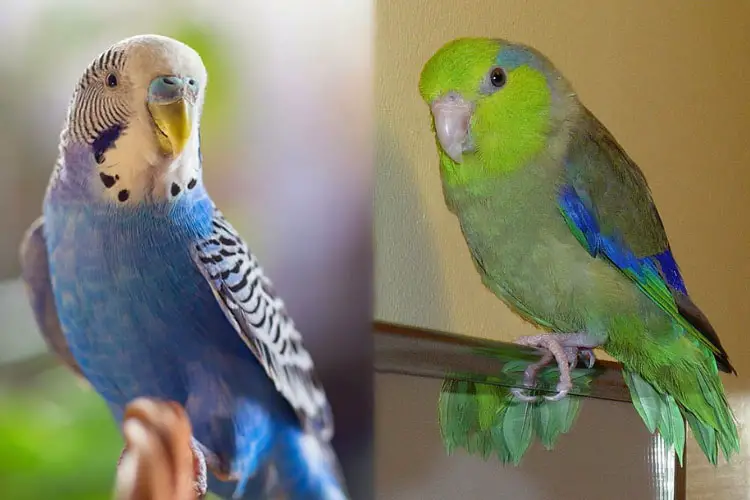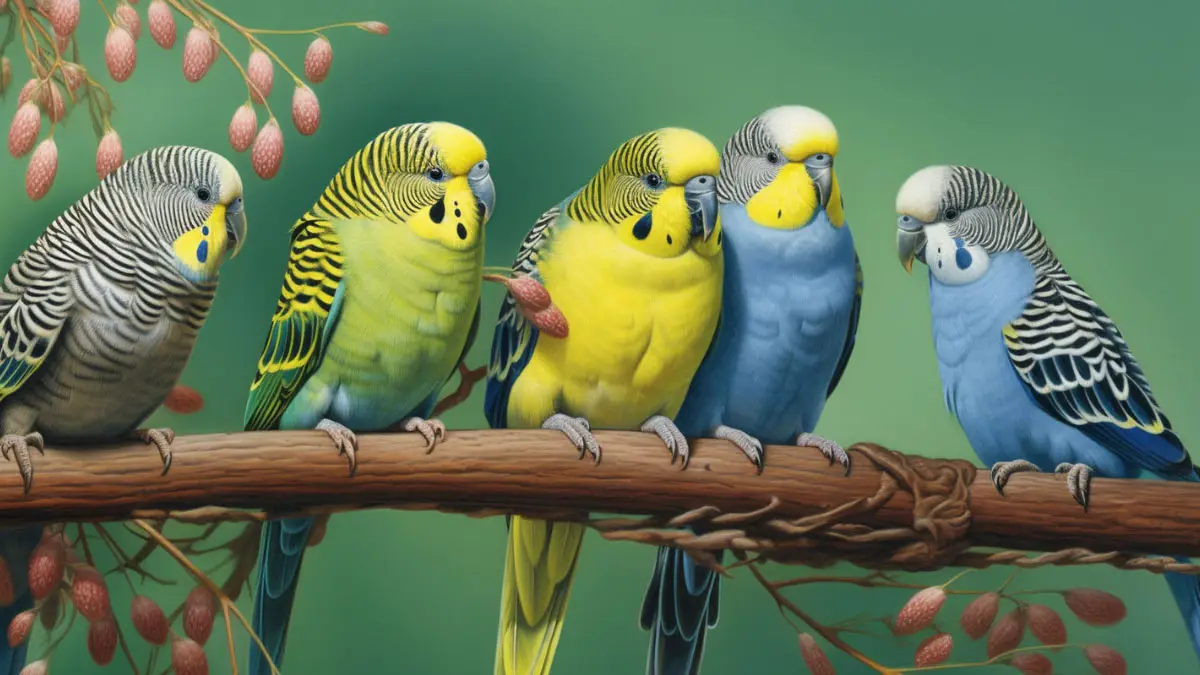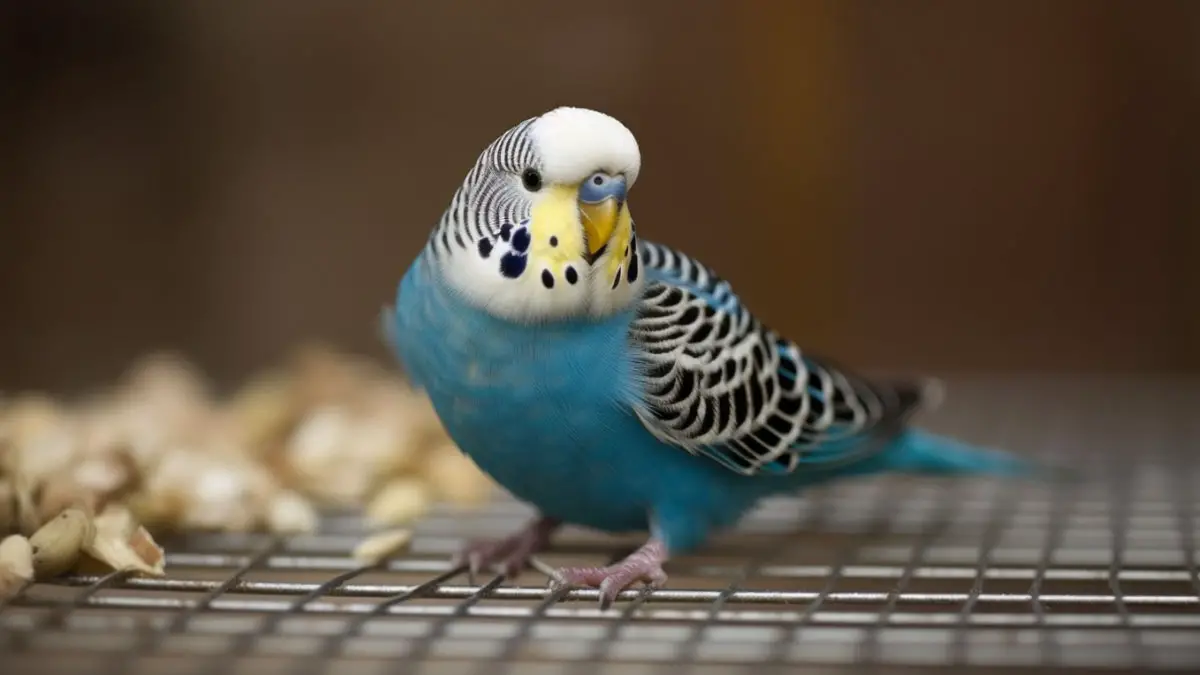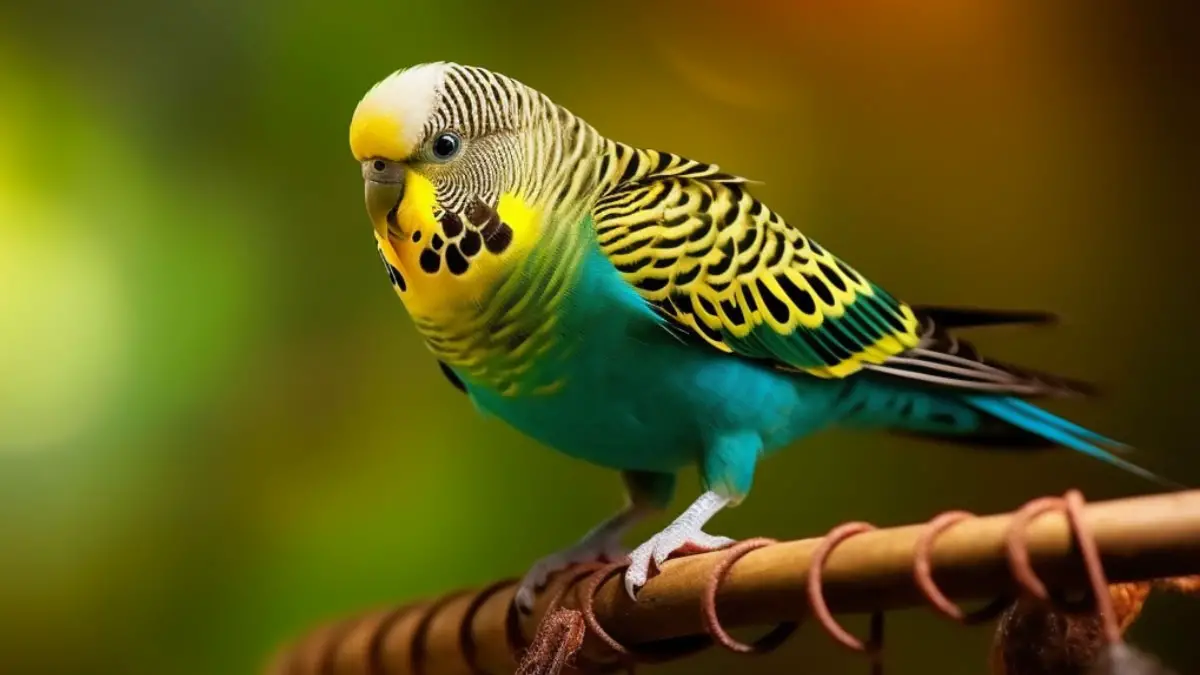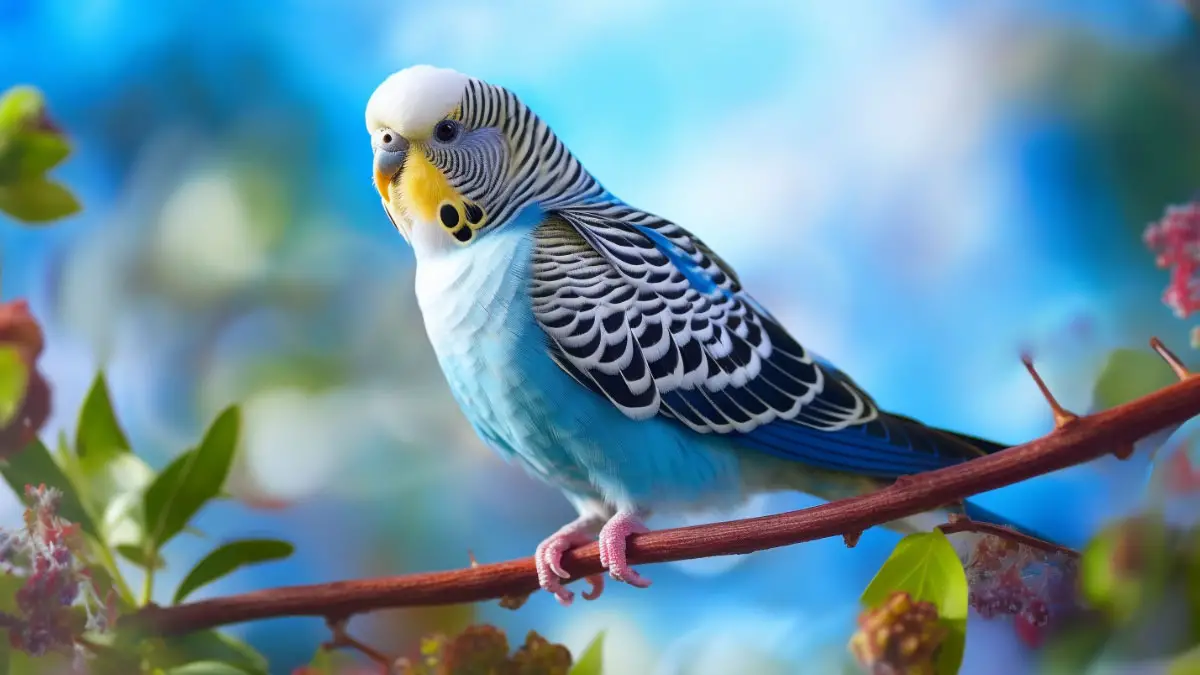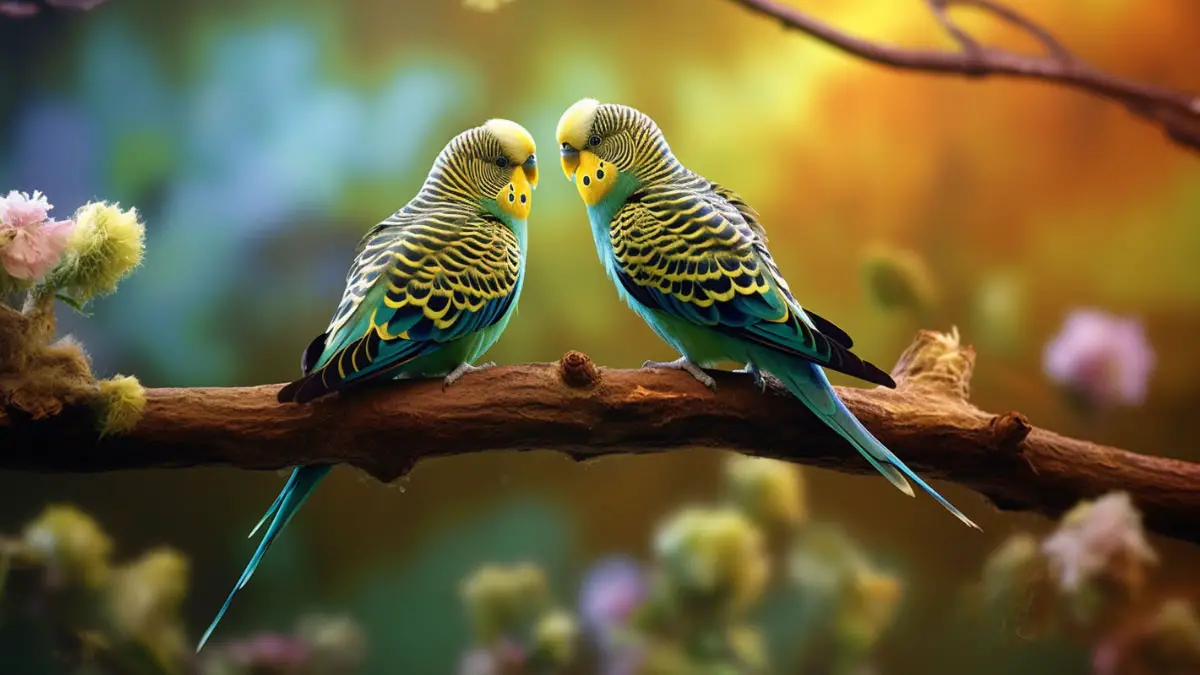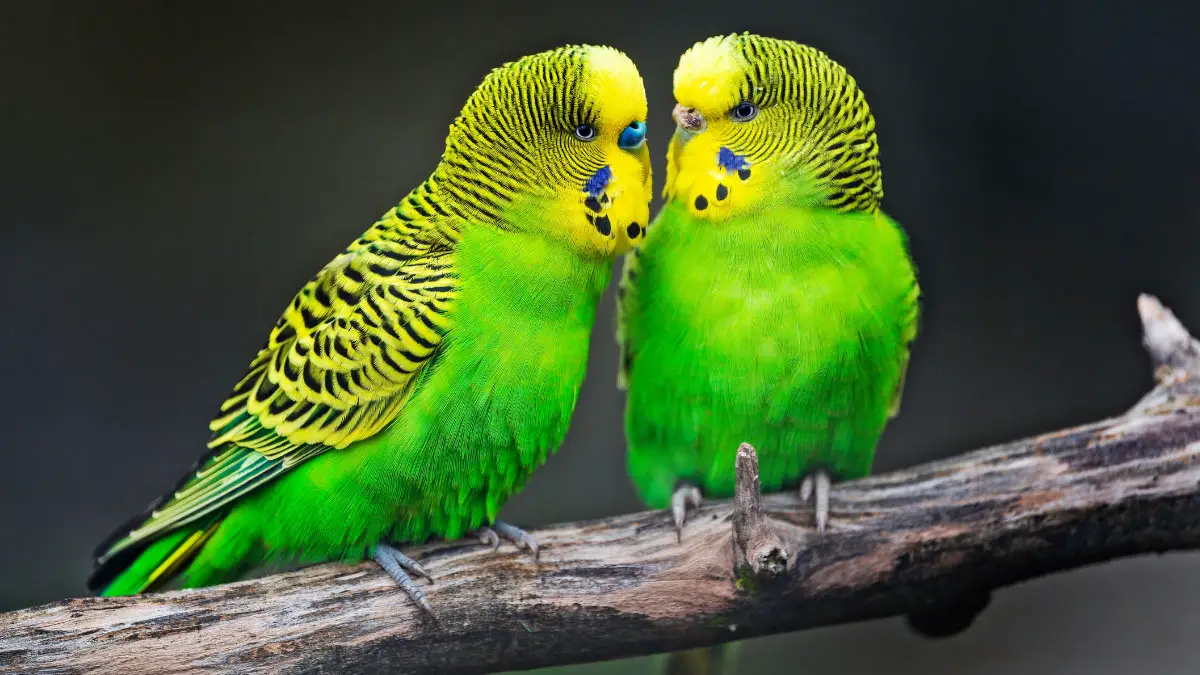If you’re looking to get your first pet bird but are not sure whether to go with a budgie or Parrotlet, this guide will help you make a more informed decision. When choosing between the two birds, you probably want one that’s easy to maintain, more gentle, friendlier, entertaining, and not aggressive. So, which one should you keep?
Budgie vs parrotlet’s key differences lie in their physical looks, temperament, personality, lifespan, and level of commitment required. Budgies are generally cheaper than parrotlets which can cost you a few hundred dollars. However, the two birds share some similarities including diet, intelligence, and activity level.
This article will take you through a side-by-side comparison of these two top pet birds. We’ll compare them in terms of physical characteristics, personality, intelligence, lifespan, etc. By the time we’re done with this guide, you’ll have chosen which pet bird is ideal for you.
Budgie vs Parrotlet comparison table:
| Budgie | Parrotlet | |
| Size | 6 to 8 inches | 4 to 5 inches |
| Weight | 1 ounce | 1 ounce |
| Human attention | About 2 hours per day | About 2+ hours per day |
| Temperament | friendly | friendly |
| Noise level | Low | Medium |
| Behavioral training | Can learn a few simple tricks | Can learn a few simple tricks |
| Cost | $10 to $35 | $200 to $350 |
| Life expectancy | 7 to 10 years | Up to 20 years |
Budgie Vs Parrotlet comparison (side by side):
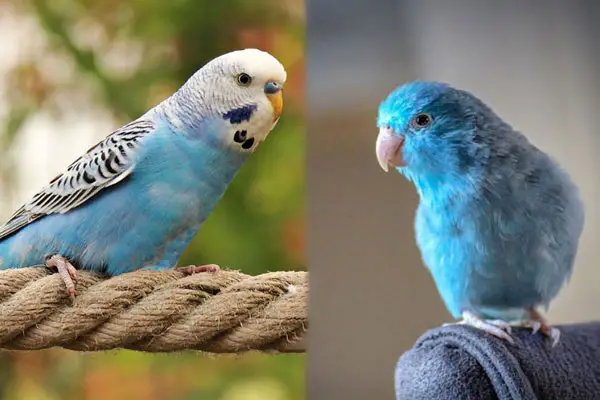
This side-by-side comparison will help bring out the key differences and similarities between a budgie and a parrotlet:
Physical characteristics
The budgies usually feature long tail feathers while parrotlets have short and stubby tail feathers in addition to big beaks.
Regarding the parrotlet vs budgie size, the parrotlets are generally smaller and can grow to a maximum size of 5 inches. This is unlike their budgie counterparts which can grow as big as 6 to 8 inches!
The two birds also come in a wide variety of colors due to selective breeding for pet trade by hobby breeders.
Budgies usually have light green coloration with black bars on their head, back, and wings. The females are characterized by beige or tan cere (fleshy part around the bird’s nostrils) while males cere is bluish.
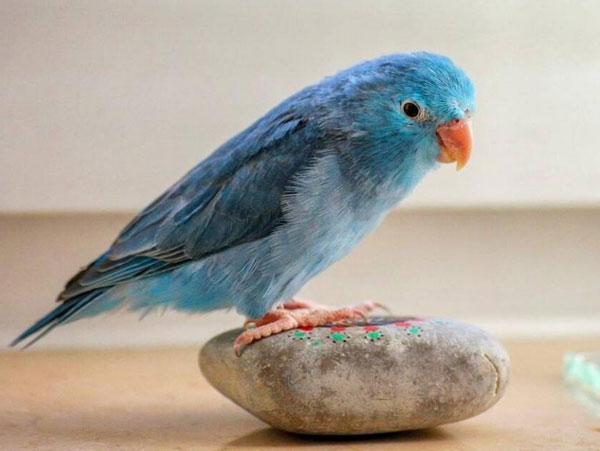
Young budgies feature bar markings on their forehead which recede with age, and their eyes have a dark iris that gradually runs grey with age.
The small size of these pets makes them adorable. They have curved beaks and large heads that mimic those of larger parrots. They feature zygodactyl feet, where two toes point forward and the other two point in the rear.
The parrotlets usually have a green coloration, though they’re also available in a wide range of color mutations including blue, albino, and lutino.
Males have bright blue splashes behind their eyes and on the back. This easily distinguishes them from the females.
Personality
Parrotlets have such a big personalities in their small bodies. They’re fearless and are known to be quite defensive of their cages.
They can attack not only larger pets in your house but also newly introduced birds in their cages.
Their level of aggressiveness also means you can’t keep them with pet birds of other species. Once they become bonded to one another, they’ll easily attack all the other pet birds.
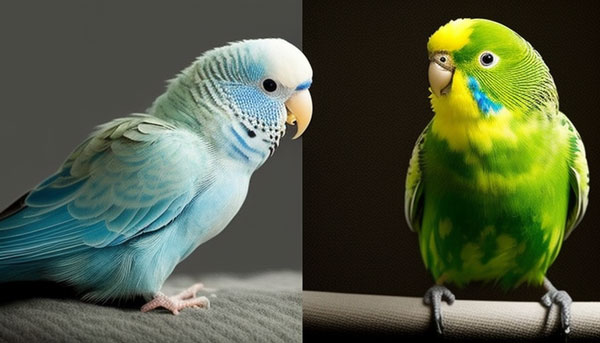
And on some occasions, they may even turn on their mates. Their biting habits also make them unsuitable for homes with kids.
Another thing to note about these birds is that they’re high-energy and love playing and climbing. As long as you provide them with a diverse range of perches and toys, they can entertain themselves for long hours.
The same cannot be said about budgies as they’re highly friendly and social pet birds. Even in the wild, these birds love pairing up or living in small colonies when not planning to migrate.
In captivity, parakeets are quite playful and make good company for each other. They can also bond with their owners, and their docile behavior means they can get along well with young kids.
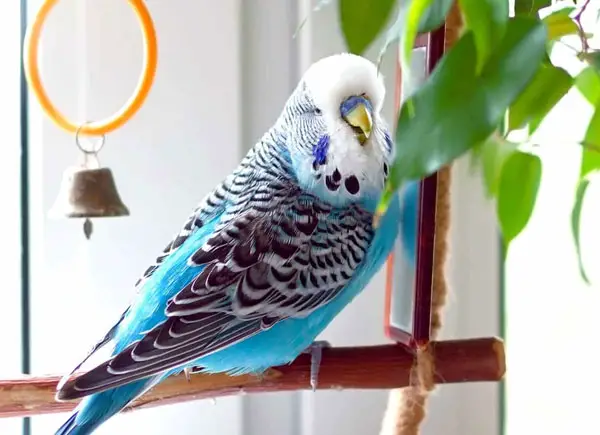
However, keep in mind that when pairing them with other budgies, they may not bond well with you or fluently mimic your speech.
Despite being playful and active, the budgies are quieter compared to other types of parrots.
Temperament
Budgies are extremely calm and affectionate pet birds and have the pleasant temperament. They also bond pretty well with humans.
Even better, these bids are quite entertaining and can provide you with hours and hours of entrustment with their various antics.
Parrotlets are the opposite of budgies. They like to defend their space and aren’t as cuddly as budgerigars. However, they can develop a bond with humans.
These birds have an attitude. They can be loving when they want to. When tamed and hand-fed, they can make affectionate companions.
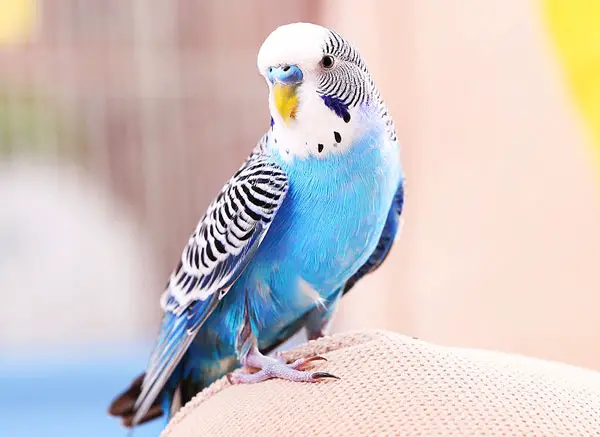
But if not properly handled, they can get impish and unruly. They do great as pets when not kept together with other pets and can become aggressive to other pet birds, especially if untamed.
Because of their fearless nature, these pets can easily get themselves into danger, say when they get in a fight with your furry pets and they don’t want to back down.
Life expectancy
Budgies have a lifespan of around 10 years while parrotlets live up to 20 years! This clearly shows that the parrotlets outlive the budgies. With good care, they can live to see their 20th birthday.
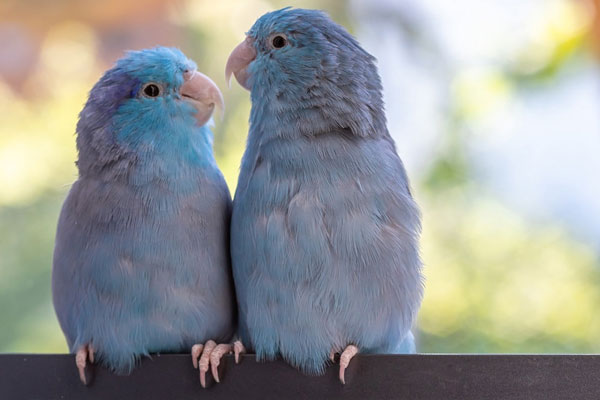
If you’re looking for a lifelong companion, you’d want to go with a parrotlet. But keep in mind that the long lifespan demands a real commitment from you!
Intelligence
You can train a parrotlet to do a variety of complex tricks as well as learn to talk. However, they aren’t the best talkers among the family of parrots. And they won’t have the same level of intelligence/trainability as their larger Amazon parrots relatives.
Budgies can also be trained to do various tricks, plus they can mimic human speech. They’re also better talkers than parrotlets, and you can teach them a few words.
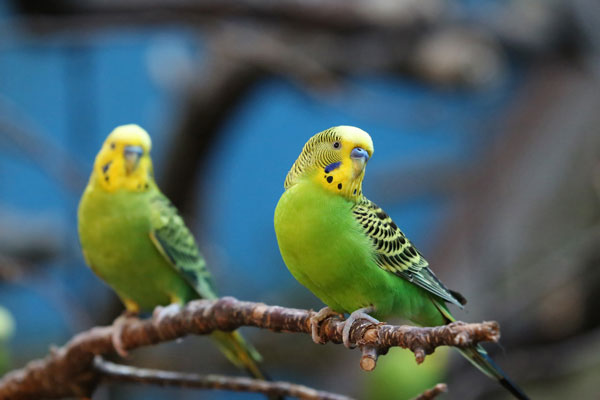
Other than human speech, these parakeets can also mimic a variety of other sounds including door creaking, text message tone, squeaking chair, etc., after hearing these sounds many times. Males are the best when it comes to talking!
Care
Parrotlets need a cage that’s positioned away from drafts. You should also provide your parrotlet with perches of varying diameters, placed at different heights, to enable it to explore its cage or world.
It will require handling and socialization to keep it tame and help kill boredom.
Engaging toys and daily human interaction are also necessary to keep your bird happy.
Parrotlets make the best pets when kept as solo birds. Otherwise, they can show dominance over other birds and even pick on them
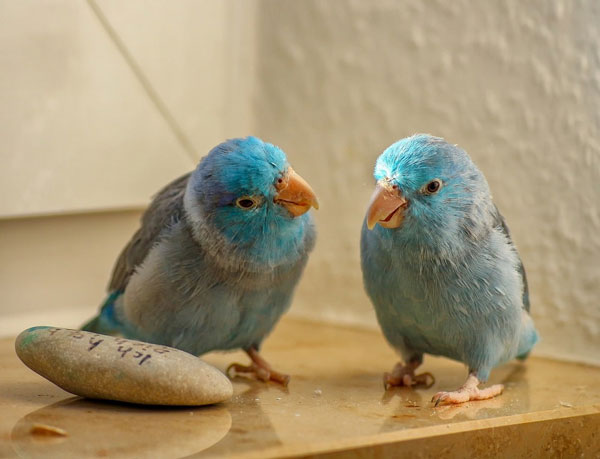
Budgies will also require a cage positioned away from drafts. They’re social creatures and will also need socialization opportunities and playtime.
The parakeets need some mental stimulation to keep off boredom. So you should provide them with toys. You can also place a mirror in their cage to entertain them.
Budgies’ Social nature means you can pair them up as pets without worrying about potential bullying.
Both birds generally have fast-paced metabolism and require fresh water and food every day.
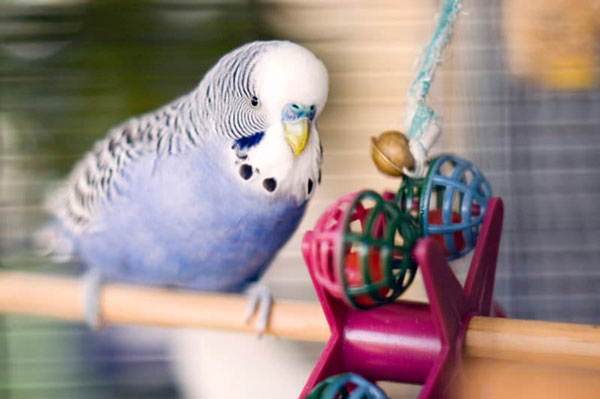
And when changing their foods, you’ll need to wash their feeding dishes and water bowls. Changing their liners regularly, say once every week, is also recommended.
Diet
Both parrotlets and budgies love eating a variety of fresh seeds, fruits, and vegetables.
In addition to this, you should also them high-quality commercial feed to ensure they get essential minerals and vitamins.
You’ll need to provide them with cuttlebone as well as mineral blocks for calcium and other minerals.
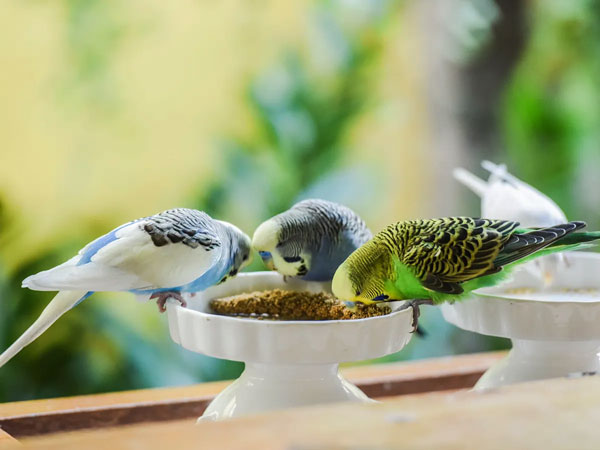
Be sure to provide your pet birds with appropriately sized food and get rid of any uneaten food in your bird’s cage before it goes bad.
Besides, your pet bird should have access to fresh water at all times.
Budgie vs Parrotlet for young kids
Parrotlets aren’t a good choice for homes with young kids. This is due to their aggressive nature, especially the untamed ones. This makes them unsuitable for kids and even other pets.
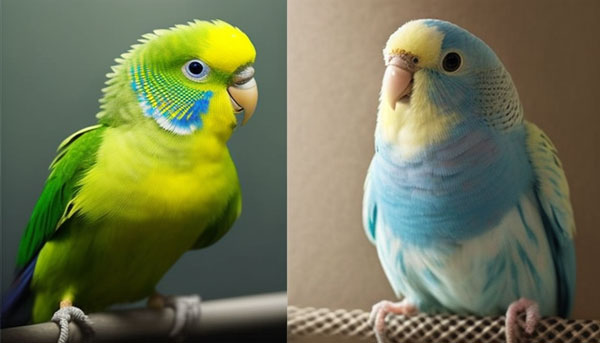
The budgie, however, is quiet, calm, and affectionate. And can be okay for a house with young kids as long as the kids are respectful of it. Nonetheless, adult supervision when kids are interacting with any pet is always advisable.
While the beak of this bird isn’t powerful compared to that of other birds, it can easily hurt your kid’s little fingers.
Final Verdict
Budgies and parrotlets make great pet birds and have a wide range of similarities such as diet, being easily trainable and intelligent, and requiring pretty much the same level of care. Both birds require human interaction of around 2 hours per day, though budgies will appreciate longer hours.
However, they also have clear-cut differences including life expectancy, temperament, personality, and physical appearance. While parrotlets have an attitude and act willfully, budgies stay happy and friendly at all times. A budgie will never get nippy but you can expect the parrotlets to do it due to their aggressiveness.
